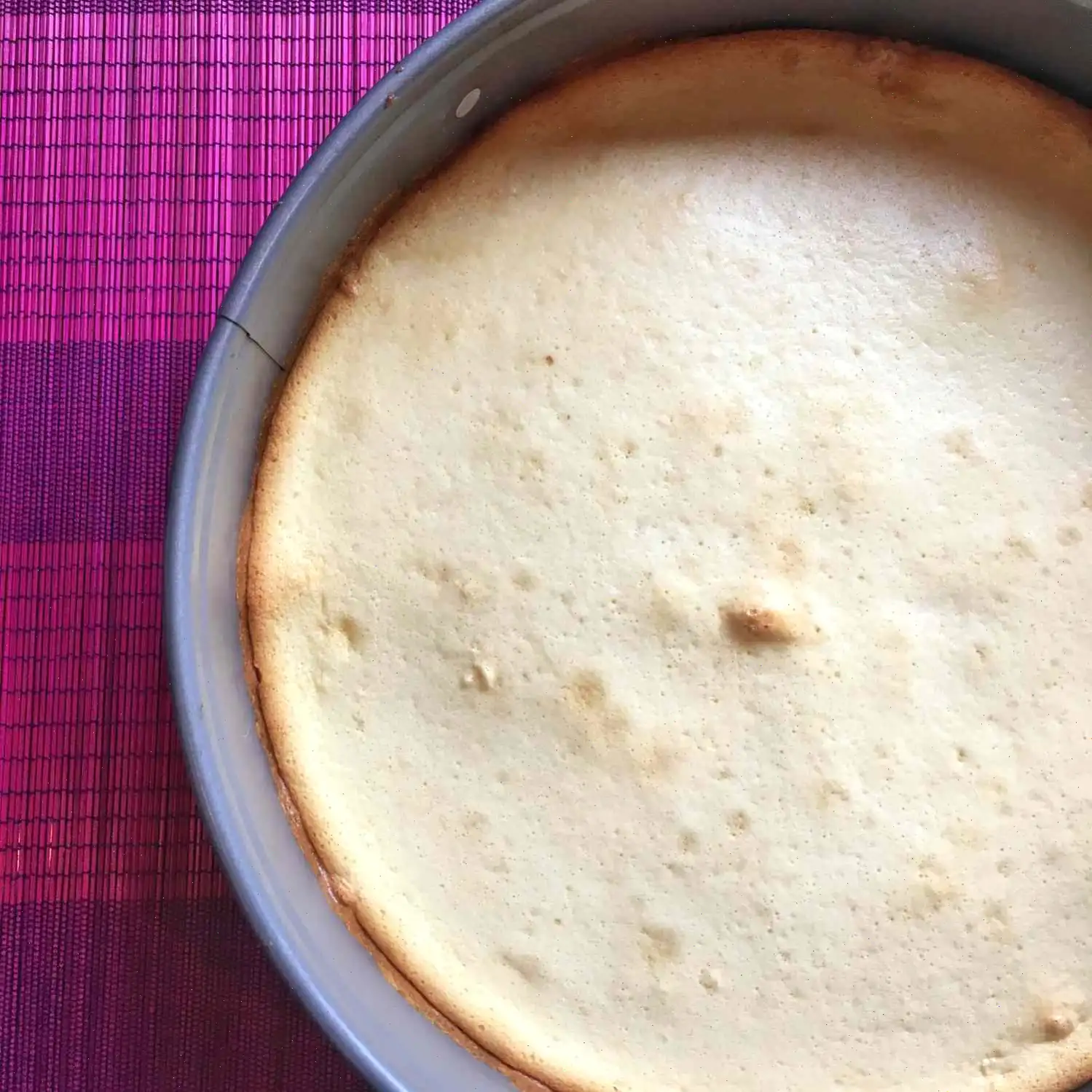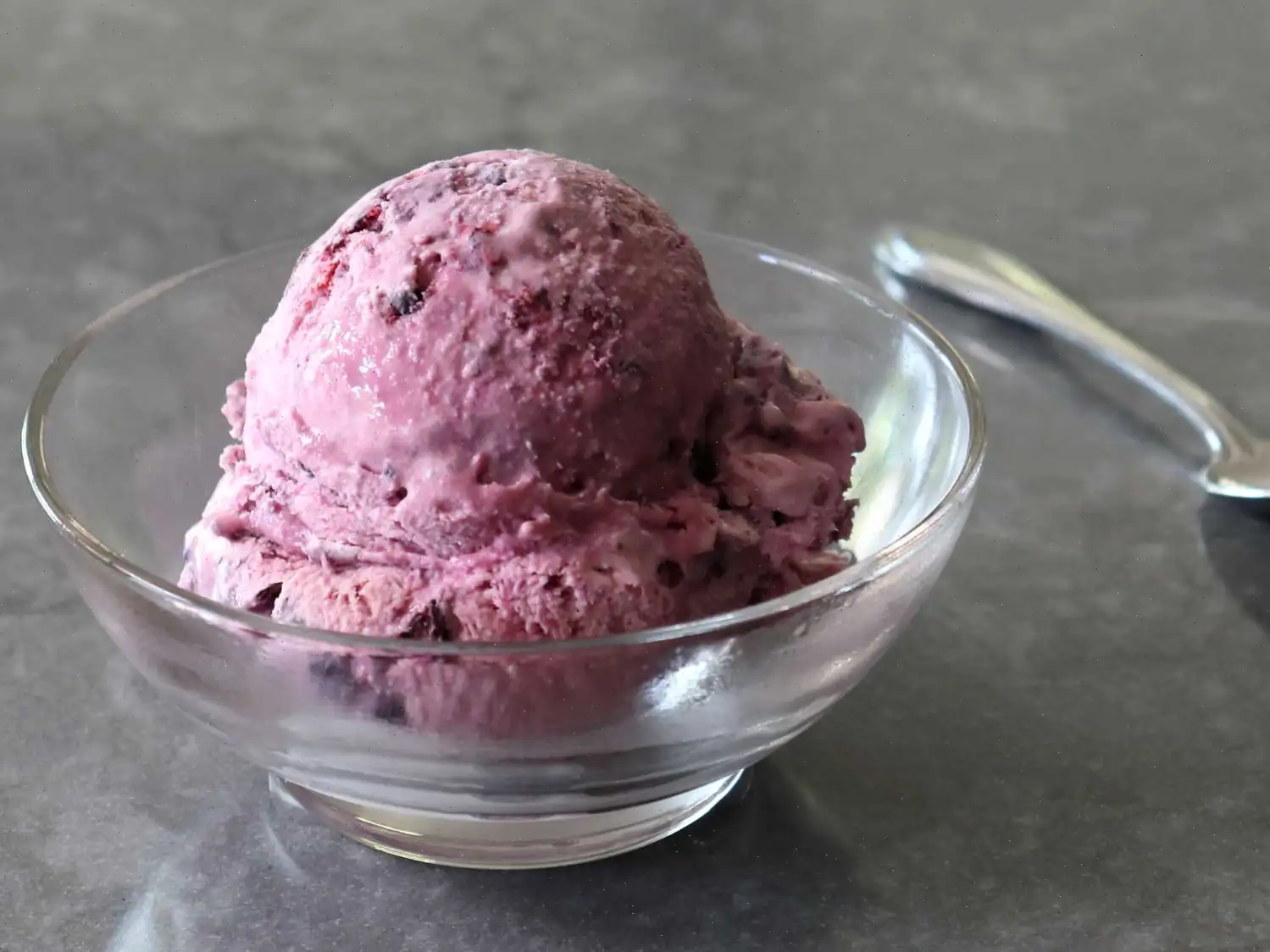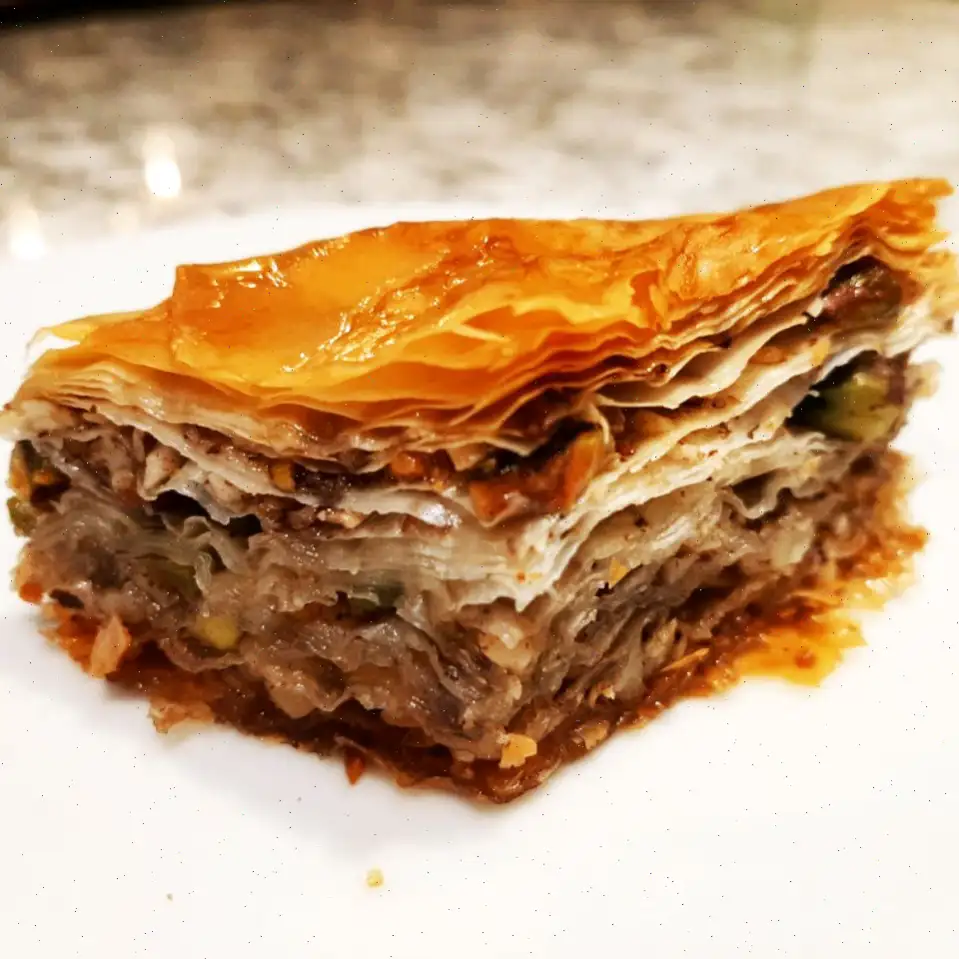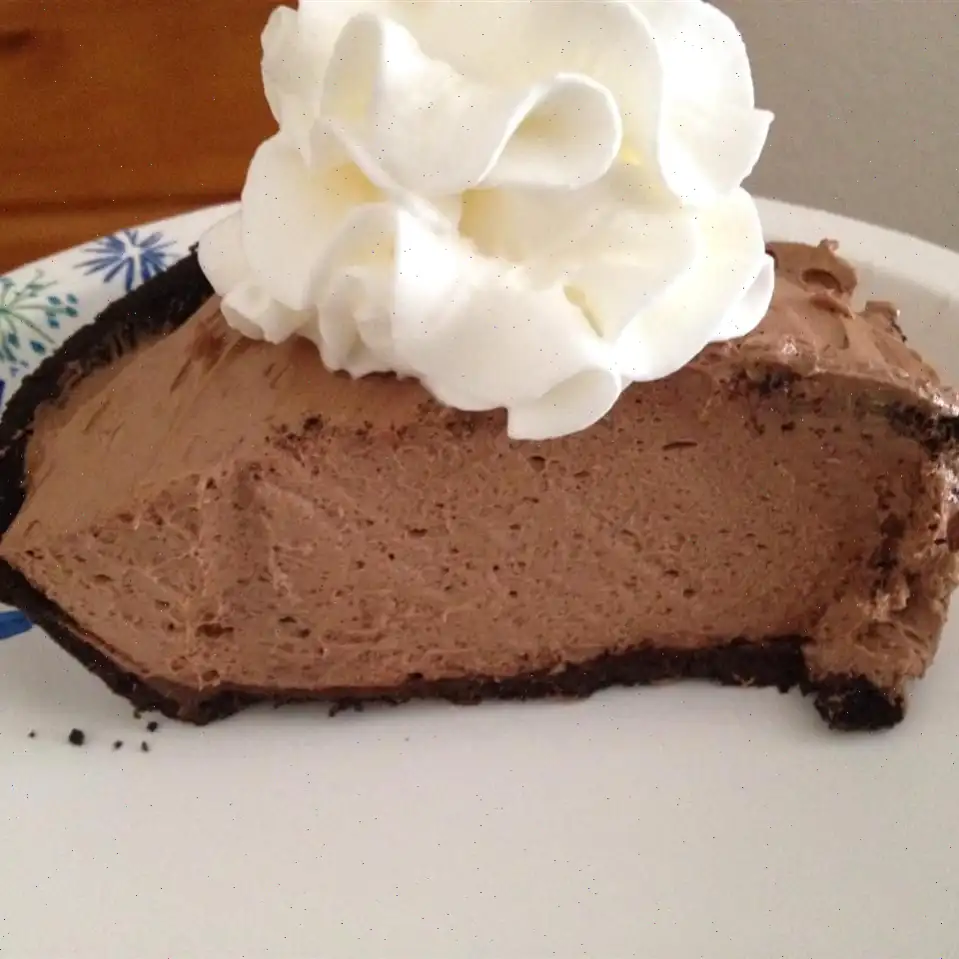
3-Ingredient Japanese Cheesecake Recipe
White Chocolate Cheesecake
This delicate white chocolate cheesecake offers a smooth and creamy texture, perfect for any occasion. The combination of white chocolate and cream cheese creates a rich flavor, while the lightness from the whipped egg whites ensures a fluffy finish. A dessert that is both easy to prepare and delightfully satisfying.
Ingredients
- 1 (4-ounce) bar white chocolate, chopped
- cup cream cheese, softened
- 3 large eggs, separated
Directions
- Preheat your oven to 350F (175C). Line the bottom of a 9-inch springform pan with parchment paper to prevent sticking.
- Place the white chocolate in the top of a double boiler over simmering water. Stir frequently and scrape down the sides with a rubber spatula to prevent the chocolate from scorching. Let the chocolate melt for about 5 minutes. Once melted, remove it from heat and allow it to cool slightly.
- In a large mixing bowl, combine the melted white chocolate with the softened cream cheese and egg yolks. Mix well until the ingredients are fully incorporated.
- In a separate bowl, beat the egg whites using an electric mixer until stiff peaks form. This will create a light, airy texture for the cheesecake.
- Carefully fold the whipped egg whites into the white chocolate mixture. Be gentle to maintain the volume of the egg whites, which will help the cheesecake rise and stay fluffy.
- Pour the combined mixture into the prepared springform pan, smoothing out the top with a spatula.
- Bake the cheesecake in the preheated oven for 15 minutes. After this time, reduce the oven temperature to 300F (150C) and bake for an additional 15 minutes.
- Once the second baking time is complete, turn off the oven but leave the cheesecake inside for another 15 minutes. This helps it set and ensures the texture remains smooth.
- After 15 minutes, remove the cheesecake from the oven and allow it to cool completely at room temperature, approximately 1 hour.
- Once cooled, transfer the cheesecake to the refrigerator to chill for at least 3 hours before serving. This step is crucial for achieving the perfect texture.
Cook's Note
Serve the cheesecake as-is or drizzle with pured berries for an added touch of sweetness and color. Leftovers can be stored in the refrigerator for a few days.
Nutrition Facts
| Nutrition Facts (per serving) | |
|---|---|
| Calories | 151 |
| Total Fat | 11g |
| Saturated Fat | 6g |
| Cholesterol | 80mg |
| Sodium | 79mg |
| Total Carbohydrates | 9g |
| Total Sugars | 9g |
| Protein | 4g |
| Vitamin C | 0mg |
| Calcium | 49mg |
| Iron | 1mg |
| Potassium | 80mg |
* Percent Daily Values are based on a 2,000-calorie diet. Your daily values may be higher or lower depending on your calorie needs.
Introduction
Japanese cheesecake, with its light, airy texture and minimal ingredients, has become a beloved dessert around the world. Unlike traditional cheesecakes, this variation has a fluffier, souffle-like consistency, making it incredibly unique. One such popular recipe is the 3-Ingredient Japanese Cheesecake, made with just white chocolate, cream cheese, and eggs. But where did this iconic dessert originate, and what makes it stand out from similar desserts?
History of Japanese Cheesecake
The origins of Japanese cheesecake can be traced back to the 1960s, when it was first introduced in Japan by a bakery called Rikuro in Osaka. The idea came from Western-style cheesecakes, but with a twist. The Japanese version is lighter and fluffier, thanks to the addition of whipped egg whites. This made it an ideal dessert for the Japanese palate, where desserts are often delicately sweet and light in texture. Over time, the recipe evolved, and versions like the 3-Ingredient Japanese Cheesecake gained popularity for their simplicity and ease of preparation.
Regional Variations
Japanese cheesecake has many regional interpretations across Japan. In Tokyo, for example, cheesecakes tend to be slightly denser and sweeter, with a focus on rich, creamy textures. In contrast, the 3-ingredient version emphasizes lightness and minimalism, making it closer to the style of fluffy souffls often served in cafes throughout the country. The use of white chocolate in this recipe is a modern adaptation that adds a subtle sweetness and richness, a deviation from the more traditional savory cheesecakes found in some regions.
Differences from Similar Dishes
While Japanese cheesecake shares some similarities with other cheesecake varieties, such as the traditional American cheesecake, it stands apart in several key ways. The most significant difference lies in the texturewhereas an American cheesecake is dense and rich due to its use of cream cheese and heavy cream, the Japanese cheesecake is airy and almost souffl-like. This lighter texture is achieved through the folding of whipped egg whites into the batter. Additionally, the use of white chocolate in this recipe provides a unique sweetness that distinguishes it from classic cheesecakes, which often rely on sugar and fruit toppings for sweetness.
Where Is Japanese Cheesecake Typically Served?
Japanese cheesecake is a popular treat in cafes and bakeries throughout Japan. It is often enjoyed as a light dessert after meals or served alongside a cup of tea. In recent years, it has made its way into international cafes and dessert shops, becoming a favorite in many countries outside of Japan. The cake is also commonly served during special occasions such as birthdays, gatherings, or festive celebrations. Its delicate sweetness and airy texture make it perfect for casual dining or as an impressive yet simple dessert to share with friends and family.
Interesting Facts About Japanese Cheesecake
- The texture of Japanese cheesecake is often described as "cotton-soft" or "cloud-like" due to its lightness and fluffy consistency.
- While many Japanese cheesecake recipes call for only a few ingredients, it can take some practice to get the right consistency, especially when it comes to whipping egg whites.
- The 3-Ingredient Japanese Cheesecake is particularly popular among home bakers because of its simplicity and minimal ingredient list. Despite its ease, it still produces a deliciously impressive dessert.
- Though this cheesecake became widely popular in Japan, it wasnt until the 2000s that it gained international attention, thanks in part to food bloggers and online recipe sharing platforms.
In conclusion, the 3-Ingredient Japanese Cheesecake is more than just a simple dessertit's a fusion of cultures, a testament to the Japanese preference for light, airy sweets, and an excellent example of how less can sometimes be more when it comes to deliciousness. Whether you're a seasoned baker or a beginner, this cheesecake is sure to impress with its fluffy texture and subtly sweet flavor.
You can listen to this recipe in AI audio format. Simply click the play button below to listen to the content in a format that suits you best. It’s a great way to absorb information on the go!
FAQ about 3-Ingredient Japanese Cheesecake Recipe
Comments
Charles Allen
11/02/2023 12:41:10 AM
This dish is incredibly light and fluffy! I came across the recipe a few months ago and made it for a couple of friends who are still raving about it to this day. I highly recommend it!
Charles Mitchell
06/12/2024 11:53:50 PM
I don't like white chocolate, so I used regular chocolate instead and it was fantastic!
Christine Miller
12/13/2022 09:18:18 AM
My gluten-free guest enjoyed it. I topped it with sugared strawberries and whipped cream. If I were to make it again, I would use a smaller springform pan as the cake turned out to be only about an inch thick.
Catherine Perez
11/17/2023 06:00:22 AM
I infused it with a touch of lemon and it was absolutely delicious!
Aaron Martinez
01/30/2025 08:33:19 PM
This recipe was a hit! It was so easy to make, except for beating the egg whites by hand. I decided to make 11 servings in 12 ramekins, creating cheesecake cupcakes. The result was delicious, with the middle sinking slightly to hold more of the berry sauce I paired with it. Adding crushed graham crackers at the bottom would have taken it to the next level.
Nancy Davis
12/23/2023 01:46:29 PM
Super easy to prepare and pleasantly not too sweet, yet far from being tasteless. It pairs exceptionally well with chocolate syrup or berries, especially berries. If you're not worried about gluten, consider adding it to a graham cracker crust for a game-changing flavor profile. I simply placed it in a store-bought crust and baked it together - a delightful treat!
Michelle Hall
06/13/2024 12:45:41 AM
It was decent and simple to prepare. A bit too mild for my liking.
Stephen Parker
06/06/2023 11:56:42 AM
This Japanese cheese cake was a pleasant surprise for me. It wasn't the traditional style I was accustomed to, but it was delicious in its own unique way. The texture was reminiscent of a cheese cake pizza - flat, firm, but still delightfully spongy. While it leaned slightly towards the eggy side in taste, I found it to be very yummy overall. I followed the recipe using an 8-inch pan, and the result turned out just like the picture. A great and tasty treat for sure!
Andrew Smith
12/14/2024 08:38:48 PM
It was great and we have made it several times.
Adam Gomez
03/07/2025 12:50:59 PM
Light and airy! It was not difficult at all, and I quite liked it.








